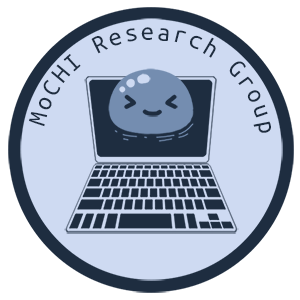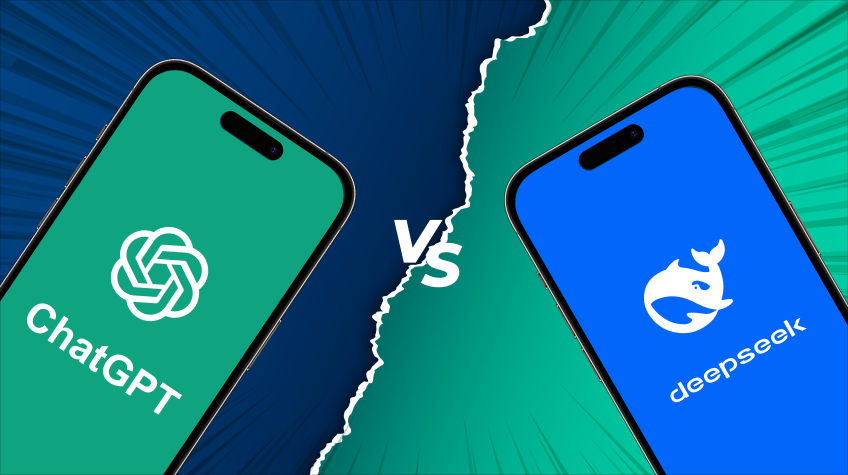The generative AI landscape has evolved rapidly, with models like OpenAI’s ChatGPT and DeepSeek’s V3 emerging as some of today’s frontrunners. While both are transforming industries, from content creation to healthcare, they differ in strengths, limitations, and ideal use cases. This blog post will delve deep into the architecture, accessibility, strengths, and weaknesses of DeepSeek and ChatGPT. It also explores DeepSeek’s future in the generative AI space, especially in light of its competition with ChatGPT.
Model Architecture
ChatGPT
ChatGPT, developed by OpenAI, is built on the Transformer architecture, a groundbreaking model introduced in 2017. The Transformer model is renowned for its ability to handle long-range dependencies in text, making it highly effective for tasks like language translation, summarization, and conversational AI. The model uses self-attention mechanisms, a process in which the model “pays attention” to which words are most relevant in a sentence to better understand context and meaning, allowing it to generate coherent and contextually relevant responses [1]. This contributes to ChatGPT’s reputation for consistency. The model is trained on a vast amount of text data, enabling it to generate responses that are both contextually accurate and detailed. However, this consistency comes at a cost. The Transformer architecture can be computationally intensive, especially when generating long or complex responses. This can result in longer wait times and increased infrastructure demands, which may limit real-time applications in environments like customer support or live educational tools. This inefficiency can also lead to higher operational costs, especially for businesses that depend on large-scale deployments of the model.
DeepSeek
DeepSeek combines the Transformer architecture with a Mixture-of-Experts (MoE) approach. In machine learning, a parameter refers to a numerical value that a model learns during training to make accurate predictions [2]. Large AI models like ChatGPT and DeepSeek contain billions of these parameters. Unlike the traditional Transformer model, which uses all of its parameters for every request, DeepSeek only activates a subset of its parameters for each task. The Mixture-of-Experts, or MoE, technique delegates specific tasks to specialized components, called “experts”, within the larger model. Instead of engaging the entire model for every input, DeepSeek routes the input through only a small number of these experts, which are each optimized for particular kinds of problems. This makes the model more computationally efficient, as it doesn’t need to use the entire network for every query [3]. The MoE approach allows DeepSeek to be more specialized in certain tasks. For example, if the model is asked to generate code or solve a mathematical problem, it can activate only the relevant ‘experts’, or the subset of relevant parameters, within the network, resulting in faster and more accurate responses. This efficiency makes DeepSeek particularly well-suited for technical tasks, where speed and precision are crucial. Thanks to this efficiency, DeepSeek R1 was developed at a fraction of the cost of its competitors, reportedly just $6 million compared to OpenAI’s GPT-4, which exceeded $100 million in training expenses [4]. The modular design can also allow for easier updates, as individual ‘experts’ can be retrained or refined without overhauling the entire model.
Accessibility
ChatGPT
ChatGPT operates on a freemium model, where basic access to the GPT4o mini model is free, but users can pay for more advanced capabilities such as GPT-4o. This model has made ChatGPT widely accessible to a broad audience, from casual users to developers and businesses. By lowering the barrier to entry, it has encouraged experimentation and innovation, allowing users to explore AI-driven solutions without an upfront financial commitment. However, the freemium model has been a double-edged sword. On one hand, it has made advanced AI capabilities more accessible, enabling small businesses and individual developers to harness the power of generative AI [5]. On the other hand, the free tier has limitations, such as slower response times and fewer features, which can be a bottleneck for more demanding users.
DeepSeek
DeepSeek takes a different approach to accessibility. The model is open-source, meaning that the community can view, modify, and improve it, a stark contrast to the “black box” nature of systems like ChatGPT. This openness has two key advantages. First, it allows for greater transparency, as users can inspect the code and understand how the model works, reducing blind trust in corporate claims. Second, it fosters collaboration, as developers from around the world can contribute to the model’s development [4]. However, the open-source nature of DeepSeek also comes with some risks. For example, cybersecurity concerns have been raised regarding potential data leaks. Additionally, there are concerns about how the model might be used, particularly in relation to U.S. data being processed in China. Some fear that DeepSeek could be used to analyze American industries and spread misinformation among the public. These concerns have led to calls for stricter regulations on the use of DeepSeek in the United States [6].
Strengths
ChatGPT
ChatGPT excels in understanding context and providing nuanced responses across a wide range of topics. This makes it particularly well-suited for conversational AI, where the ability to maintain context over long interactions is crucial. Many find that ChatGPT is also good at producing engaging conversational content with rich context, making it a popular choice for content creators and marketers [7]. Another strength is ChatGPT’s ability to provide detailed explanations alongside its code suggestions. This makes it a valuable tool for developers who are looking to learn while they code. Additionally, ChatGPT benefits from a robust ecosystem that includes APIs and plugins, allowing it to be integrated into a wide range of applications. For example, businesses can use ChatGPT to automate customer service, generate marketing content, or even assist in software development.
DeepSeek
Where ChatGPT excels in conversational content, DeepSeek shines in technical tasks and mathematical accuracy. When tasked with solving the AIME 2024, a prestigious U.S. high school math competition, DeepSeek’s R1 model scored a 79.8%. For comparison, OpenAI’s GPT-4.5 scored a 36.7%, Claude’s 3.7 Sonnet scored a 61.3%, and Google’s Gemini 2.5 Pro scored a 92.0% [8]. Additionally, the model’s direct approach and faster code generation make it a popular choice among developers. It is also optimized for specific domains more effectively. For example, it may perform better on industry-specific data like finance and healthcare, where specialized knowledge is required. This makes DeepSeek a potentially valuable tool for businesses operating in these sectors. DeepSeek’s ability to handle domain-specific data could give it an edge over more generalized models like ChatGPT in certain industries [9].
Weaknesses
ChatGPT
While ChatGPT is highly versatile, it has notable limitations. One major criticism is its lack of specialization [7]. Since it is trained on a broad dataset, it may underperform in highly specialized tasks compared to models like DeepSeek, which are fine-tuned for specific domains. As a result, industries requiring deep technical expertise may find its responses too general or lacking in precision. Additionally, running ChatGPT can be computationally expensive, especially for long or complex tasks, posing challenges for businesses looking to scale their AI operations efficiently [10]. These high processing costs can make widespread deployment prohibitive, particularly for startups or organizations with limited resources.
DeepSeek
DeepSeek’s weaknesses are more related to security and energy efficiency. As previously mentioned, cybersecurity firms have identified vulnerabilities in the app that could lead to data leaks. Another concern is the high energy consumption of DeepSeek, with early figures suggesting that one of DeepSeek’s smaller models could be more energy-intensive than the equivalent-size model from Meta [11]. While DeepSeek saves energy during training, this is offset by its more intensive techniques for answering questions and the longer answers that the model produces.
The Future of DeepSeek in the Generative AI Space
Given its strengths in technical accuracy and efficiency, DeepSeek has a promising future in the generative AI space, particularly in industries that require specialized knowledge. Its open-source nature also makes it an attractive option for developers who want to customize the model for their specific needs. Additionally, its ability to provide a free alternative to OpenAI’s ecosystem has also forced competitors to adjust their pricing strategies. For example, OpenAI recently lowered the cost of ChatGPT Plus, in part due to DeepSeek’s impact [12]. However, DeepSeek will need to address its security vulnerabilities and energy consumption issues if it wants to compete with more established models like ChatGPT. Geopolitical concerns surrounding the use of U.S. data in China could pose a significant challenge for DeepSeek’s adoption in Western markets. In addition, the energy consumption of DeepSeek could also be a barrier to its widespread adoption, especially as organizations become more conscious of their environmental impact. As AI adoption grows, user trust and choice will likely hinge not only on model performance but also on ethical considerations.
Conclusion
Both DeepSeek and ChatGPT have their unique strengths and weaknesses, and they cater to different use cases. ChatGPT excels in conversational AI and content generation, while DeepSeek may be better suited for technical tasks and domain-specific applications. With continued research and community support, DeepSeek has the potential to carve out a distinct niche, particularly in industries that require precision and computational efficiency. As the generative AI race heats up, one thing is clear: the future of AI will be shaped not just by technological advancements, but by how well these models adapt to the ever-changing needs of their users. Whether DeepSeek will dethrone ChatGPT or find its own niche, one thing remains certain: the race for generative AI dominance is far from over.
References
[1] J. Ferrer, “How Transformers Work: A Detailed Exploration of Transformer Architecture,” Datacamp.com, Jan. 09, 2024. https://www.datacamp.com/tutorial/how-transformers-work
[2] K. Nyuytiymbiy, “Parameters and hyperparameters in machine learning and Deep Learning,” Towards Data Science, https://towardsdatascience.com/parameters-and hyperparametersaa609601a9ac/#:~:text=As%20training/learning%20progresses%20the,being%20used%20during%20model%20training.
[3] C. Metz, “How Did DeepSeek Build Its A.I. With Less Money?,” Nytimes.com, Feb. 12, 2025. https://www.nytimes.com/2025/02/12/technology/deepseek-ai-chip-costs.html
[4] GeeksforGeeks, “DeepSeek vs ChatGPT: Complete Comparison of the AI Titans in 2025,” GeeksforGeeks, Jan. 28, 2025. https://www.geeksforgeeks.org/deepseek-vs-chatgpt/#google_vignette
[5] A. Fard, “The Complete Guide: How to Use ChatGPT API in Application,” UI UX Design Agency for SaaS, Fintech & AI | Adam Fard UX Studio , 2016. https://adamfard.com/blog/how-to-use-chatgpt-api
[6] K. Williams, “Chinese AI app DeepSeek was downloaded by millions. Deleting it might come next,” CNBC, Feb. 02, 2025. https://www.cnbc.com/2025/02/02/why-deleting-chinas-deepseek-ai-may-be-next-for-millions-of-americans.html
[7] V. Chugani, “DeepSeek vs. ChatGPT: How Do They Compare?,” Datacamp.com, Jan. 30, 2025. https://www.datacamp.com/blog/deepseek-vs-chatgpt
[8] K. Kavukcuoglu, “Gemini 2.5: Our most intelligent AI model,” Google, https://blog.google/technology/google-deepmind/gemini-model-thinking-updates-march-2025/#enhanced-reasoning
[9] R. Gupta, “Blocked Page,” Medium.com, 2025. https://medium.com/@raja.gupta20/deepseek-vs-chatgpt-a-new-ai-battle-c5d58f8176f3
[10] D. J. Claxton, “OpenAI Needs Scalable Plans for Small Businesses to Afford its New Tools,” Medium, Dec. 30, 2024. https://donaldjclaxton.medium.com/openai-needs-scalable-plans-for-small-businesses-to-afford-its-new-tools-d7f728cf2aff
[11] J. O’Donnell, “DeepSeek might not be such good news for energy after all,” MIT Technology Review, Jan. 31, 2025. https://www.technologyreview.com/2025/01/31/1110776/deepseek-might-not-be-such-good-news-for-energy-after-all/
[12] ForwardAdmin, “Deep Seek Vs Chat GPT, Which One Is The Best For Your Small Biz Work Flow?,” Judette Coward | Digital Entrepreneur and Content Creator, Feb. 09, 2025. https://forwardforty.com/deepseek-vs-chatgpt-which-one-should-you-is-more-useful-in-your-workflow/


